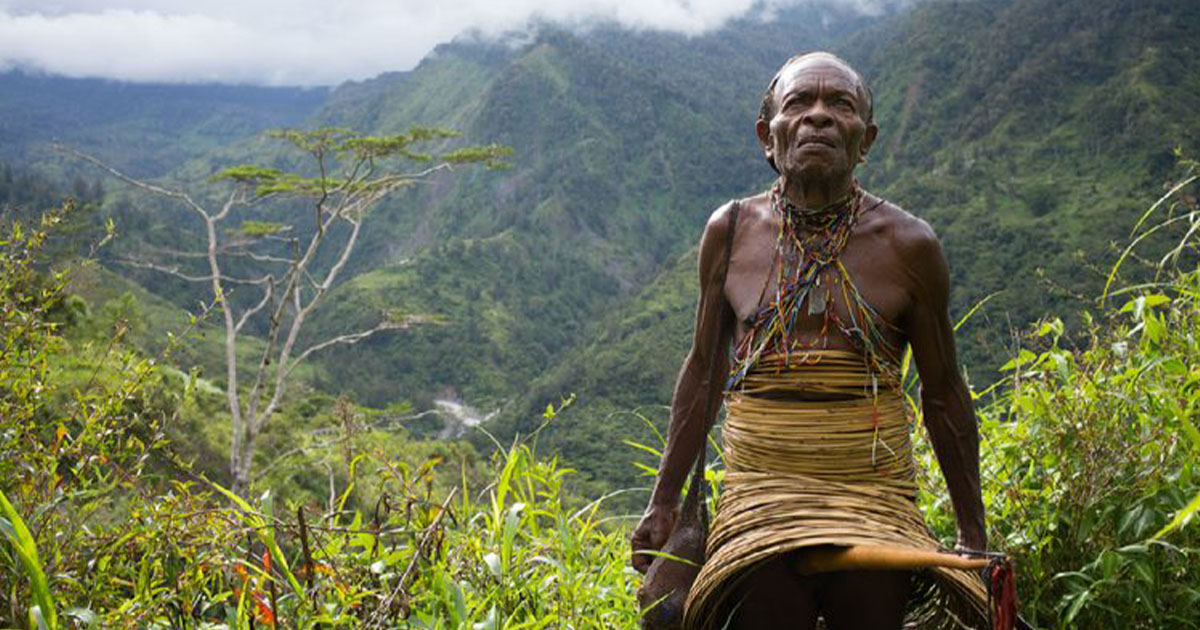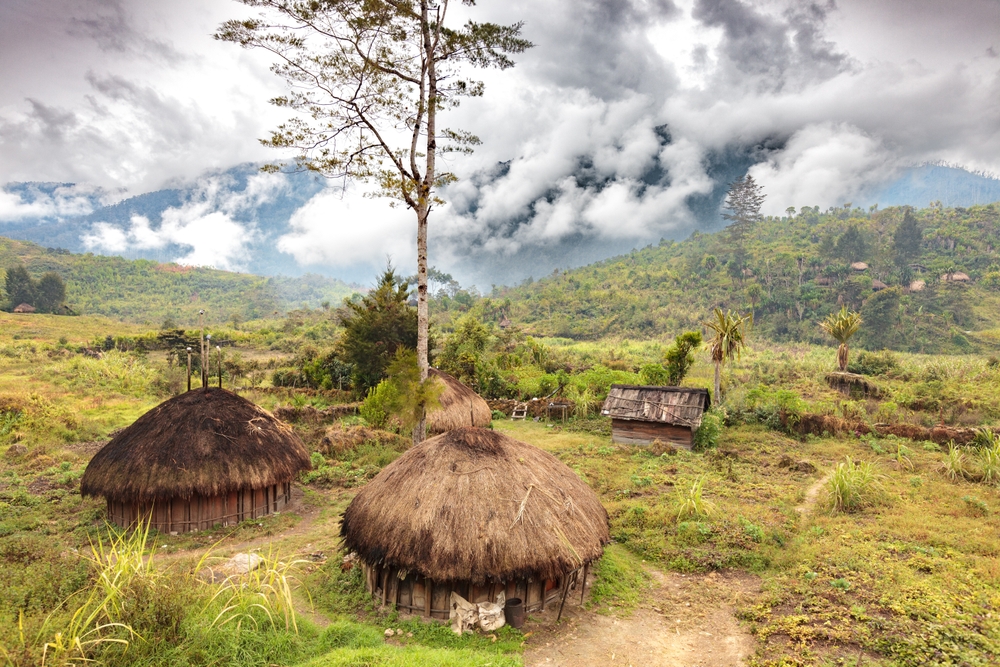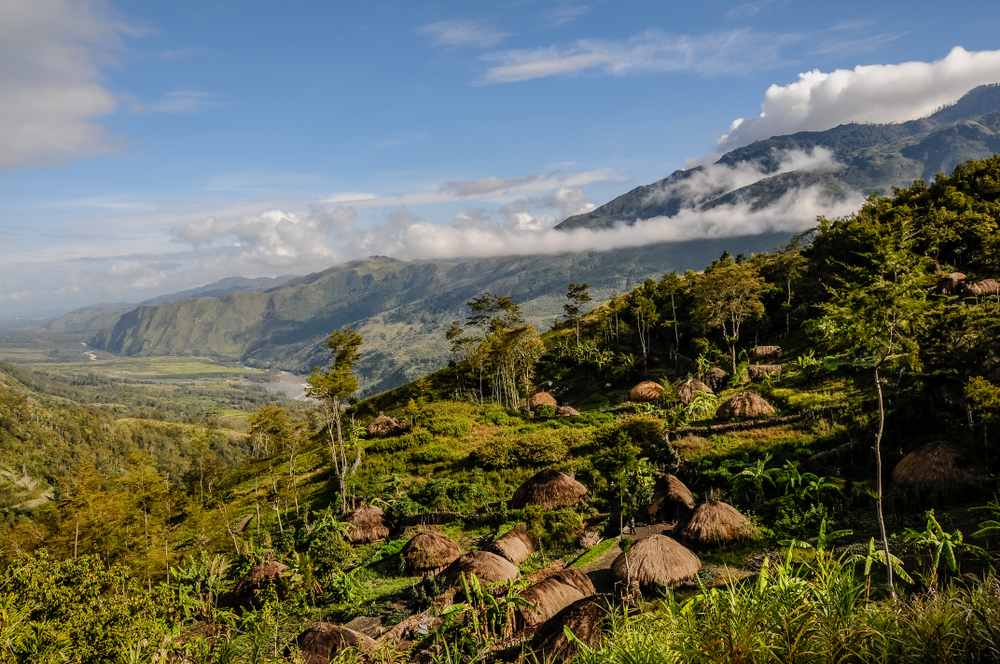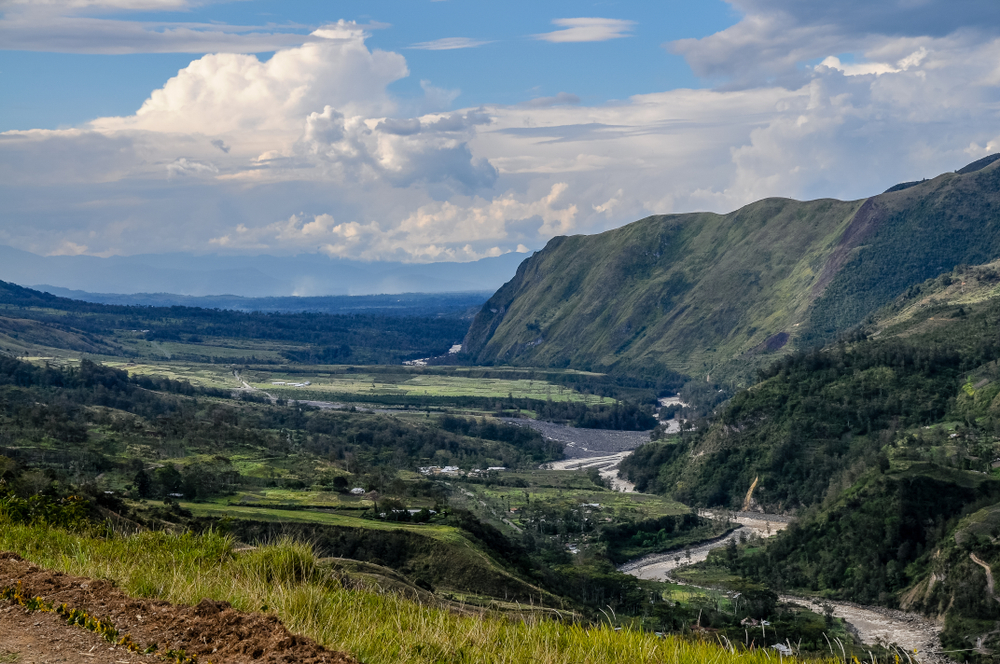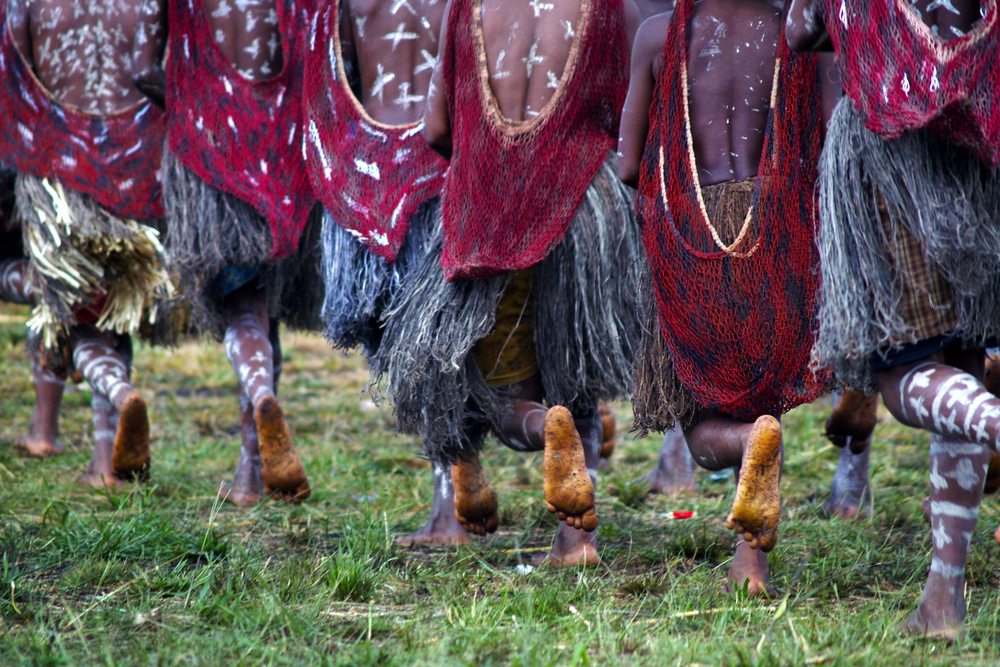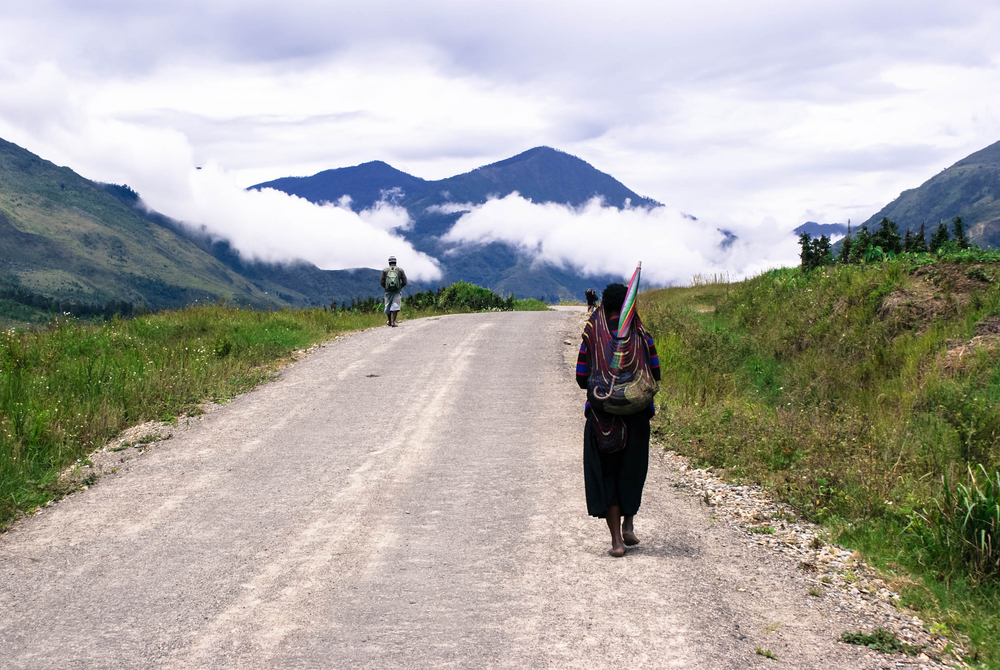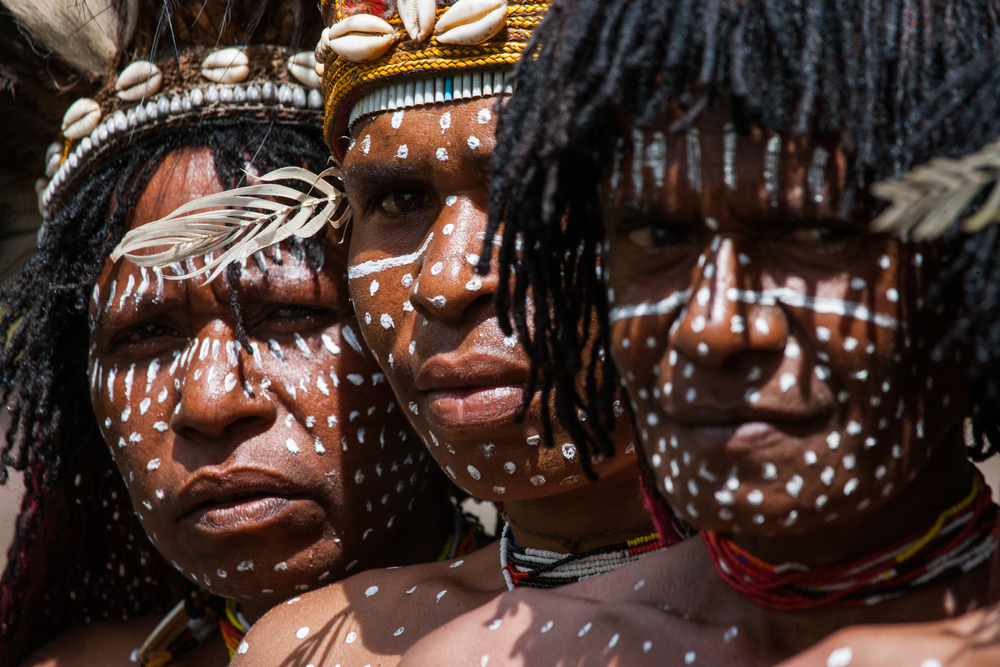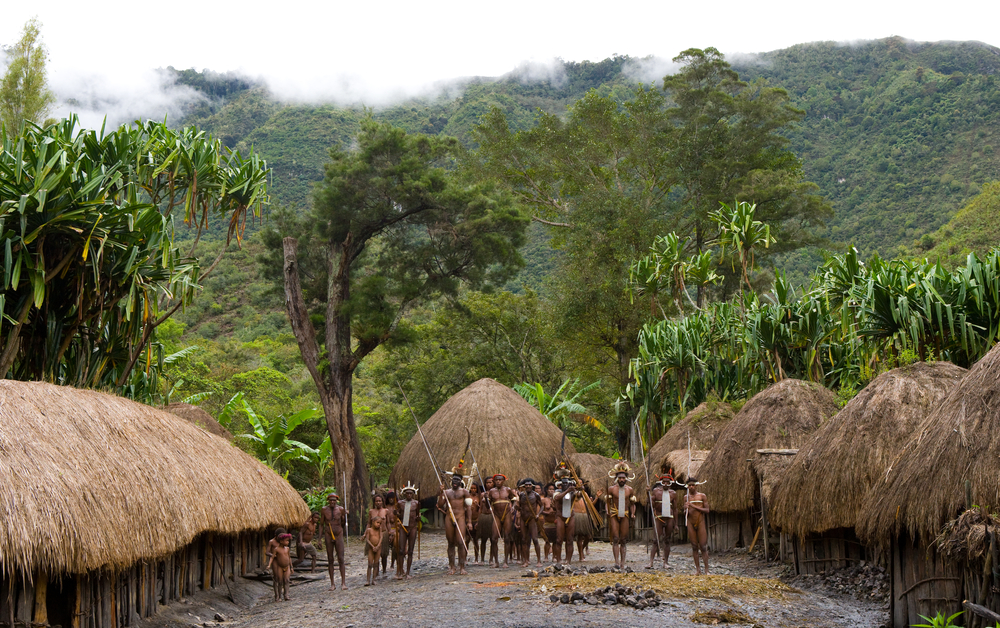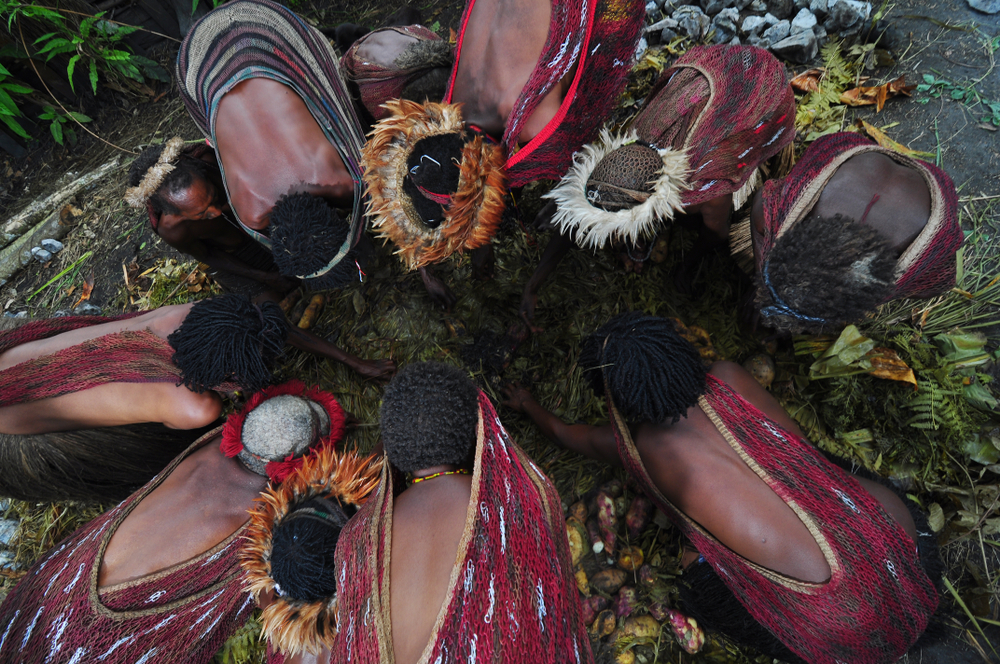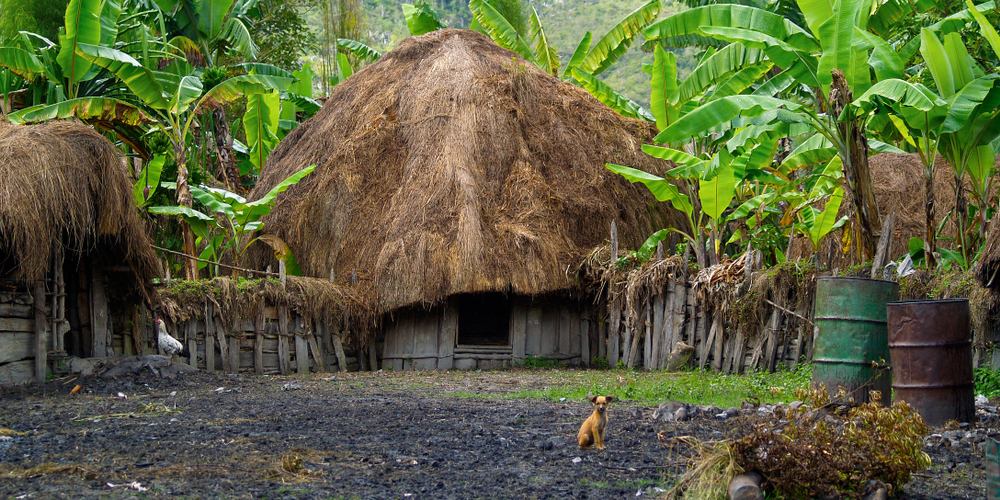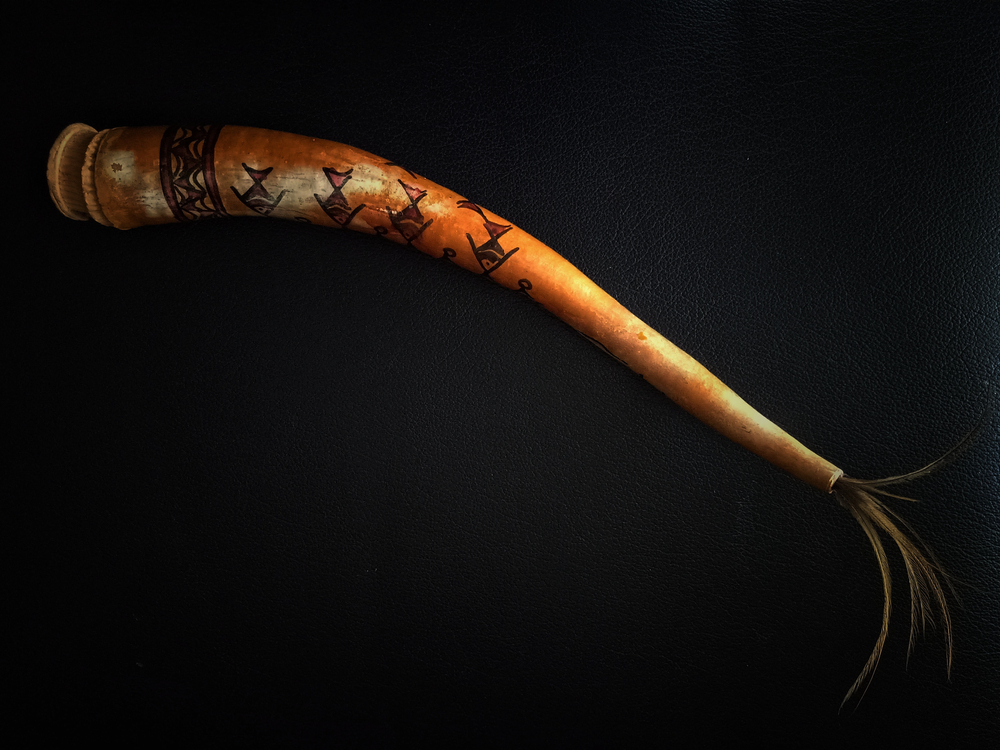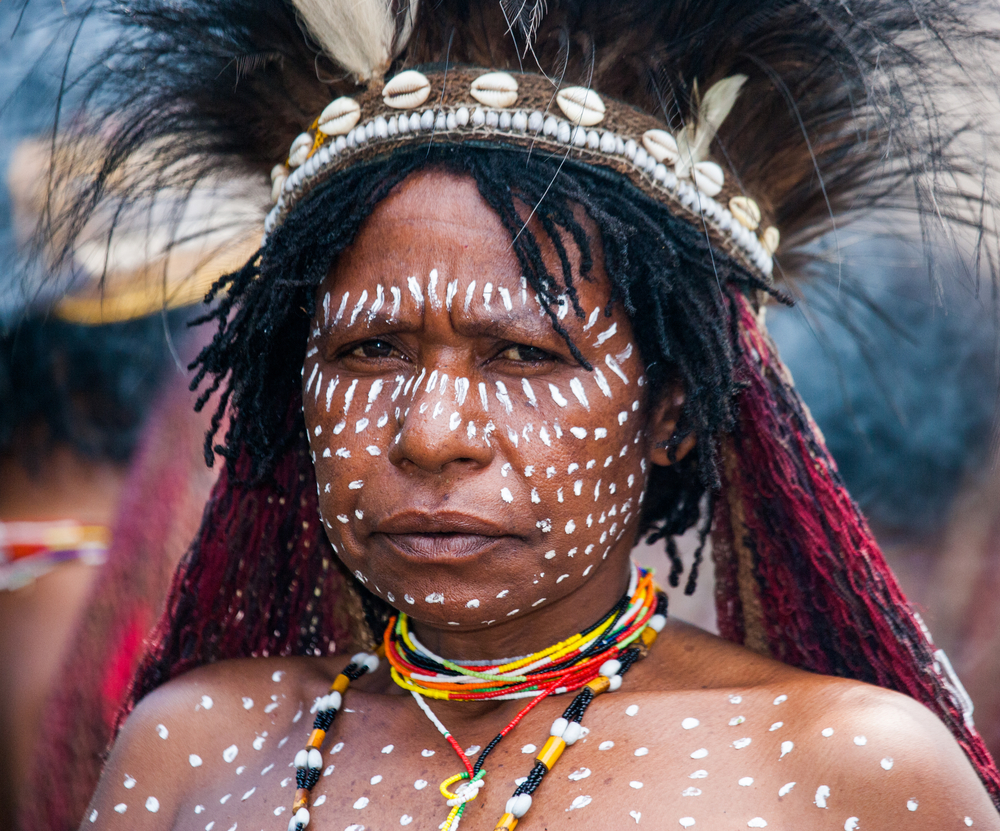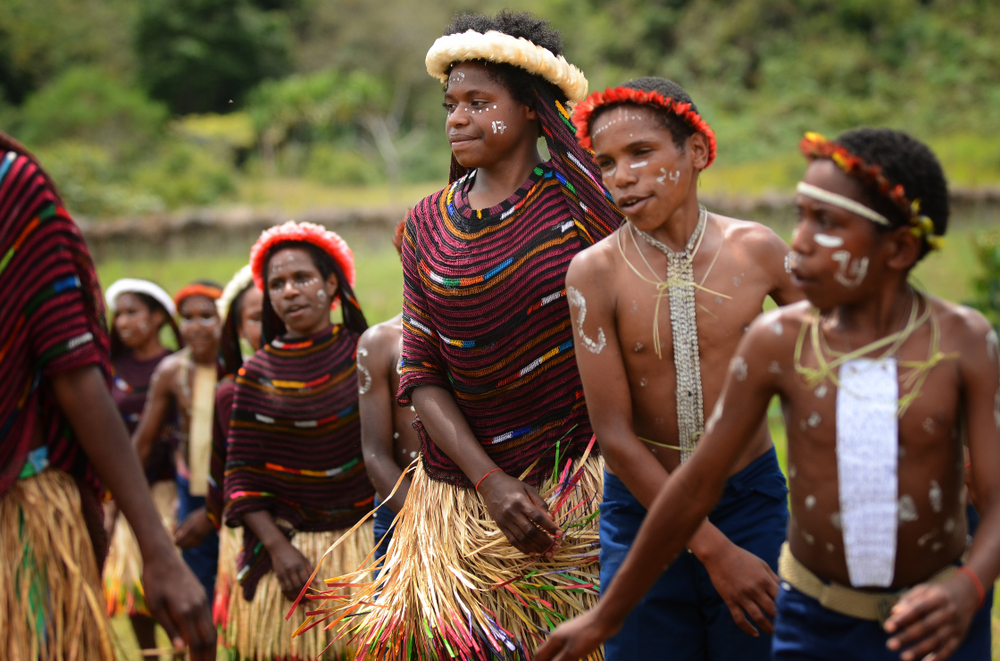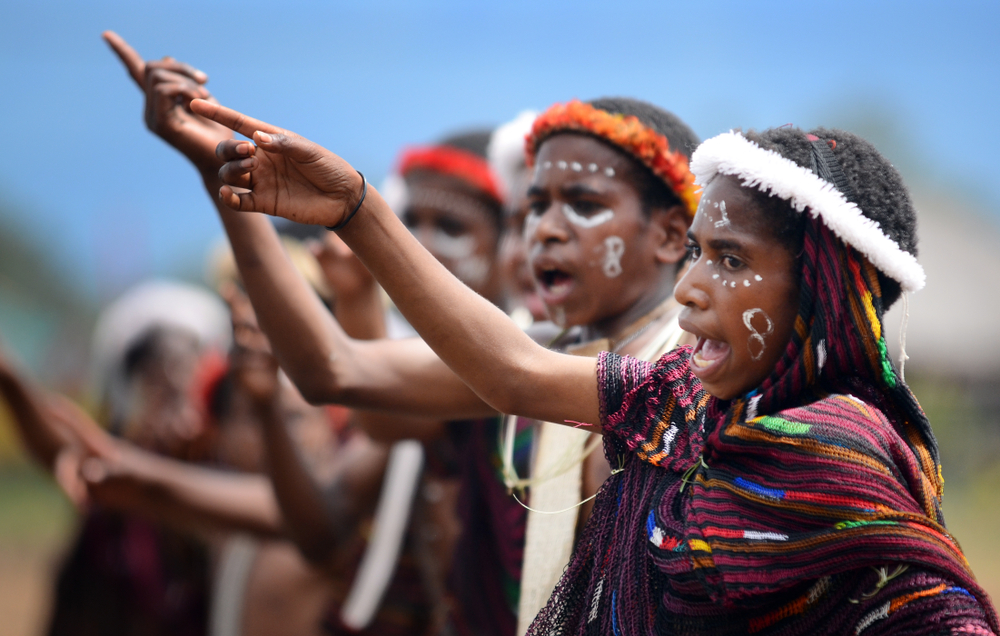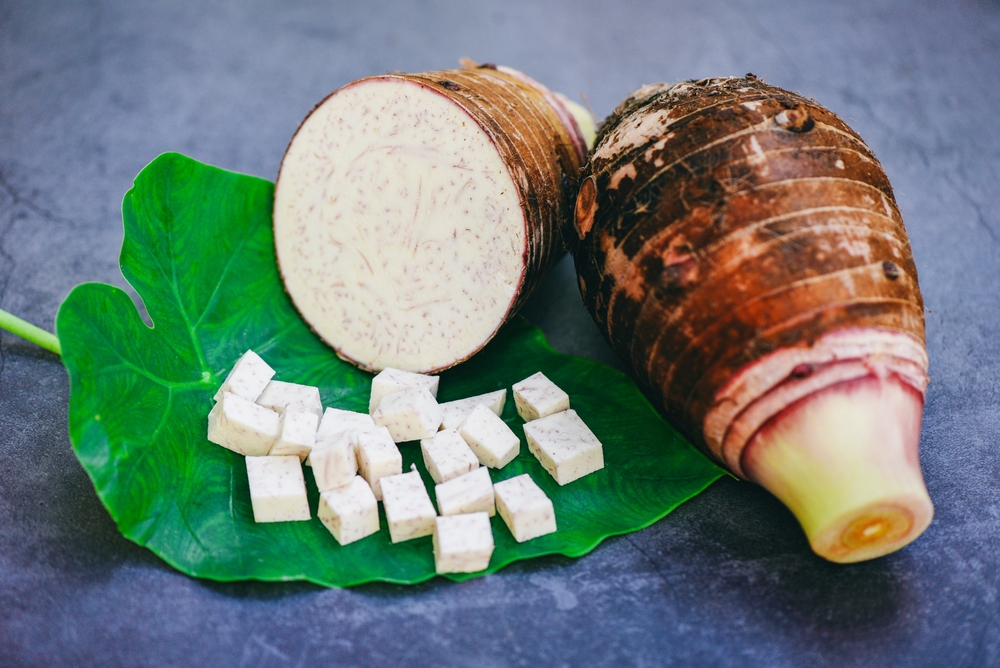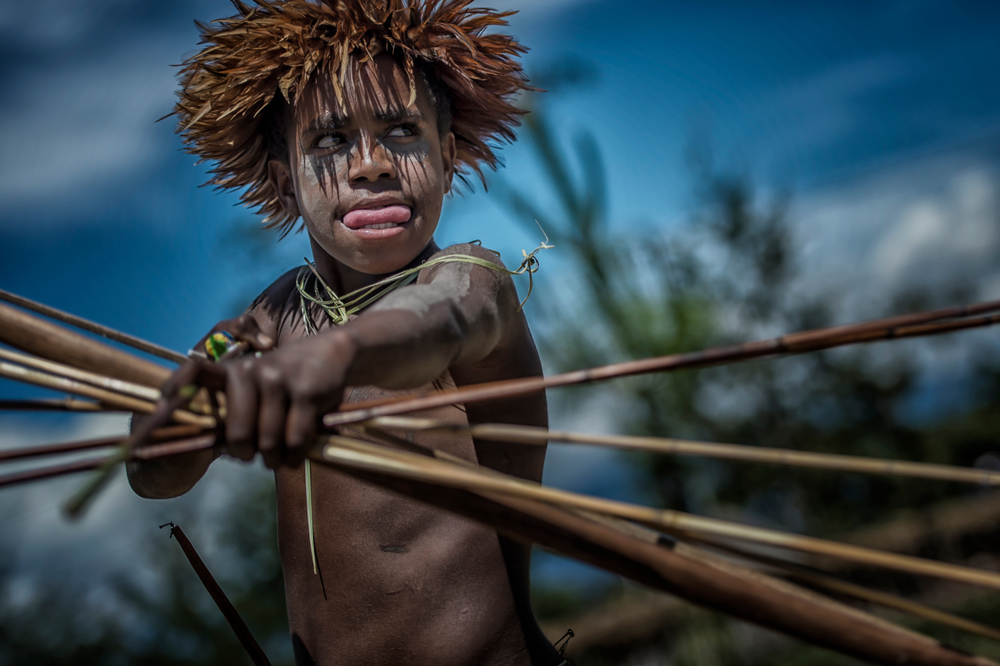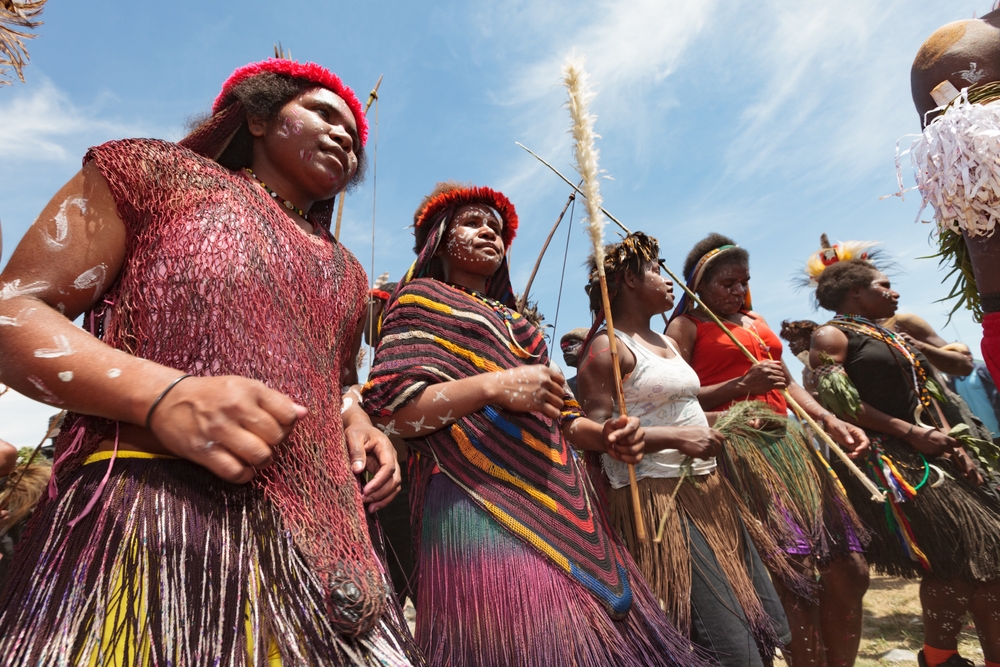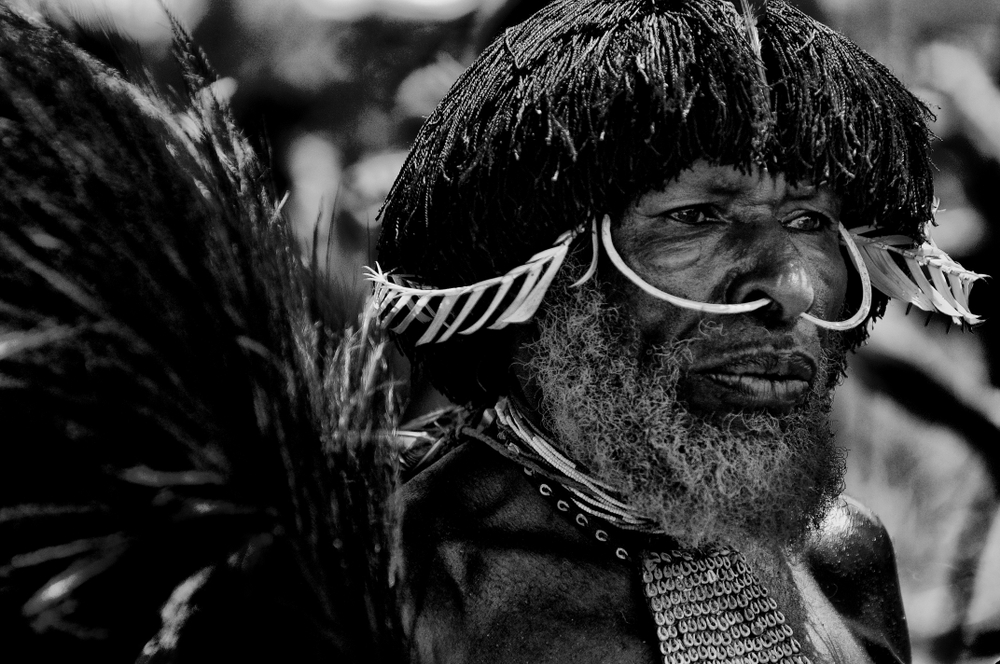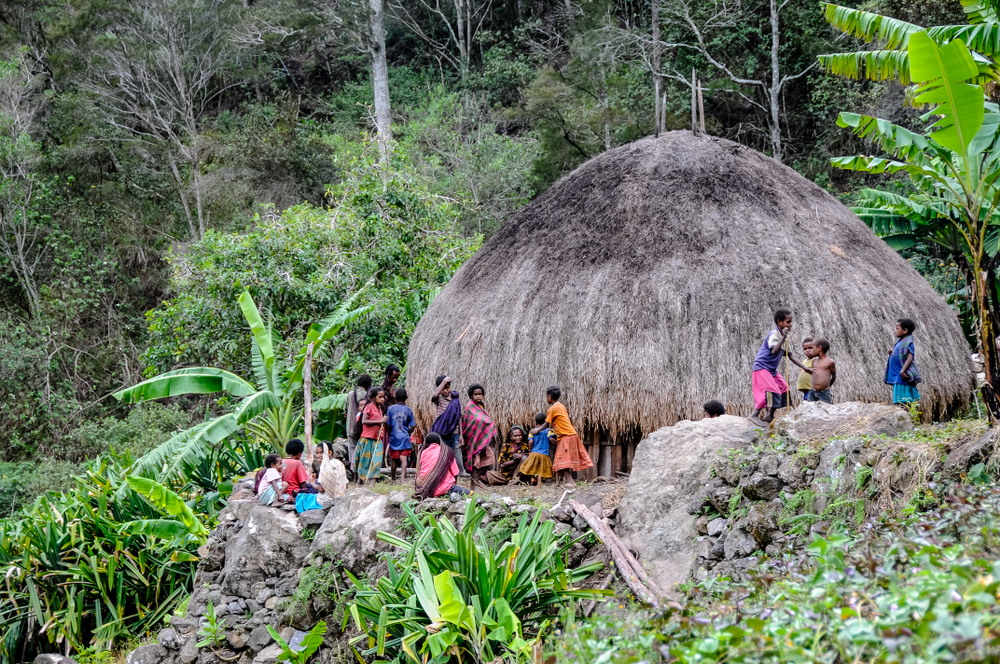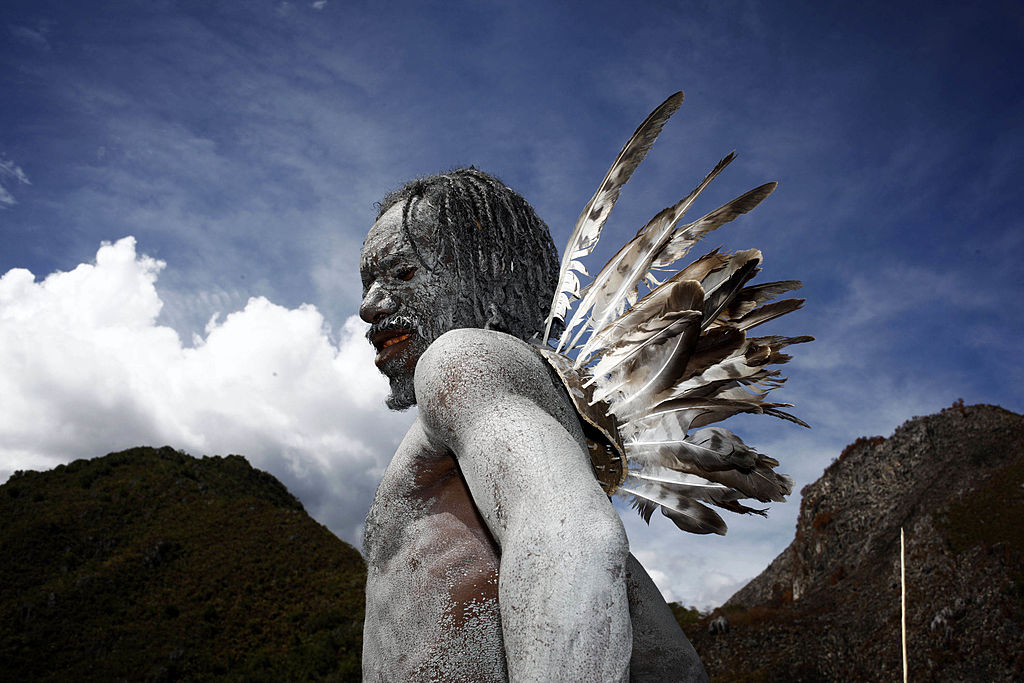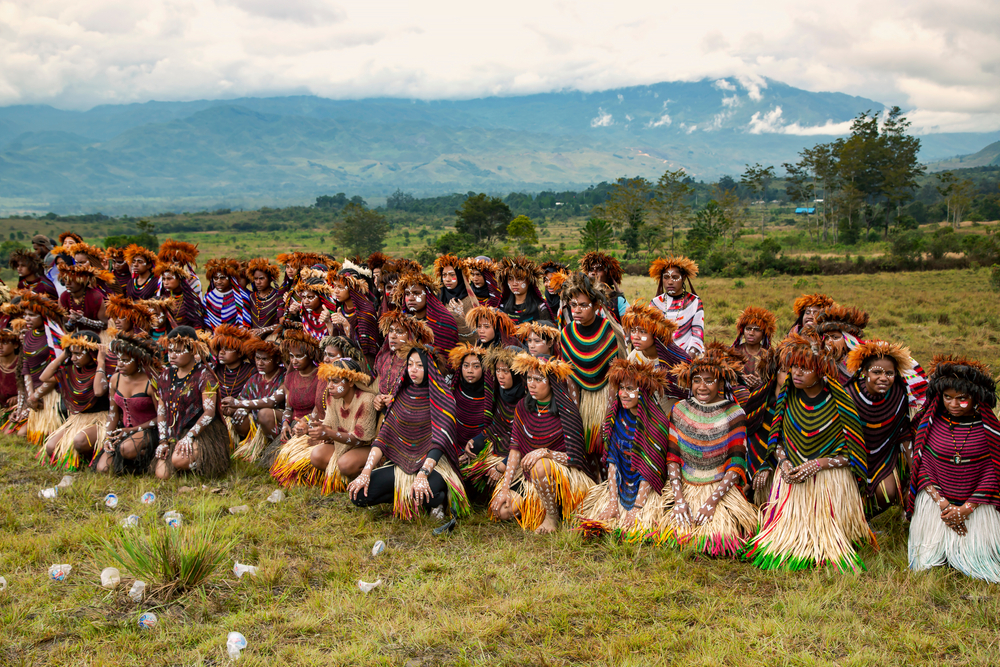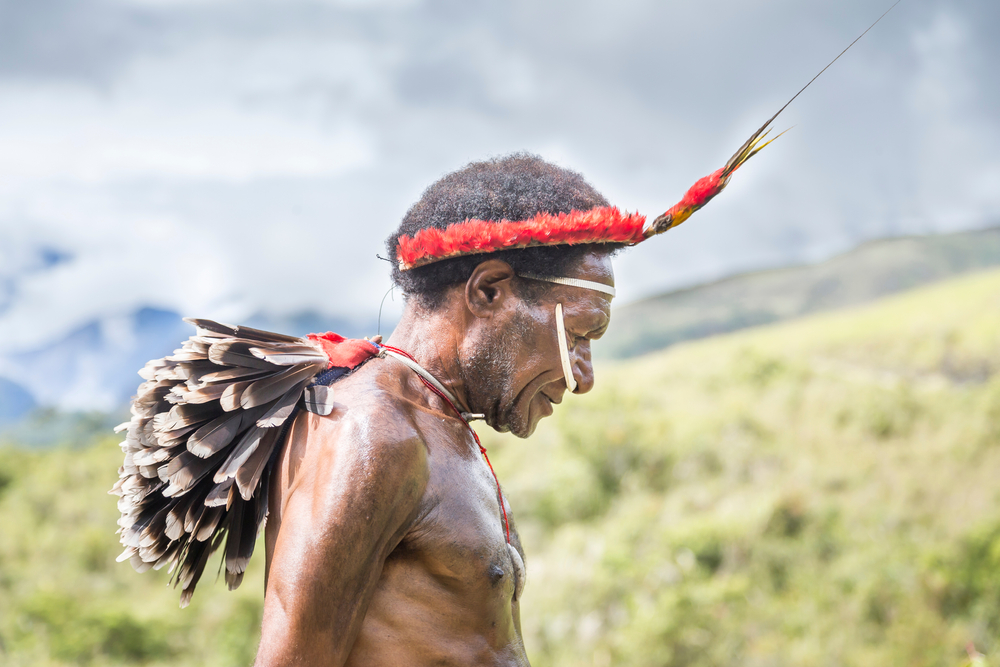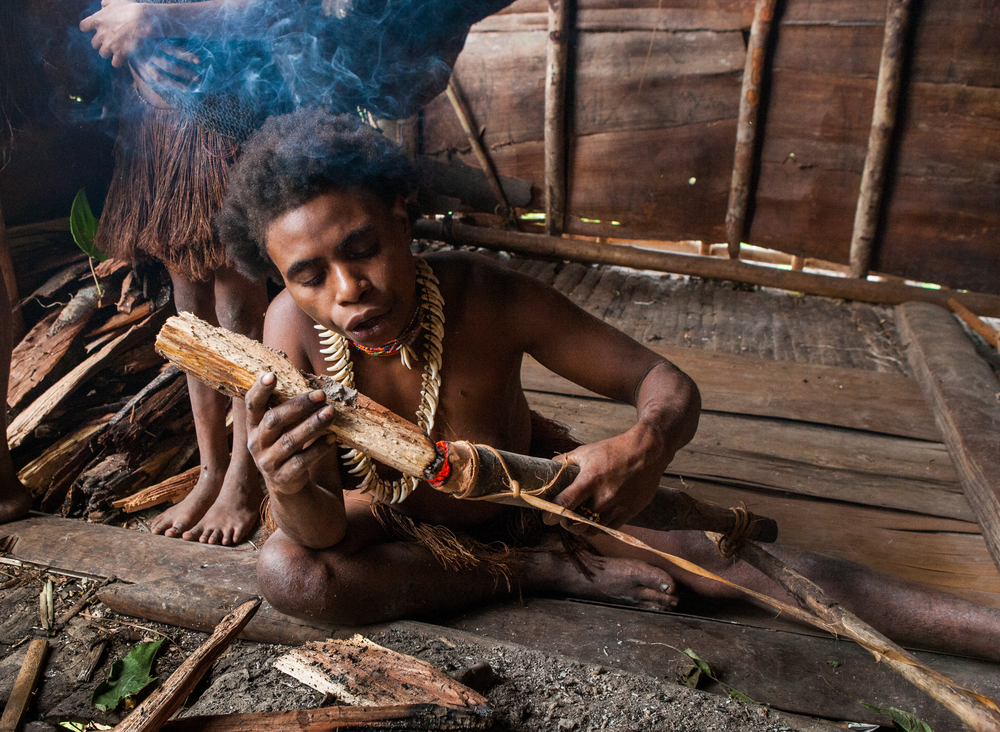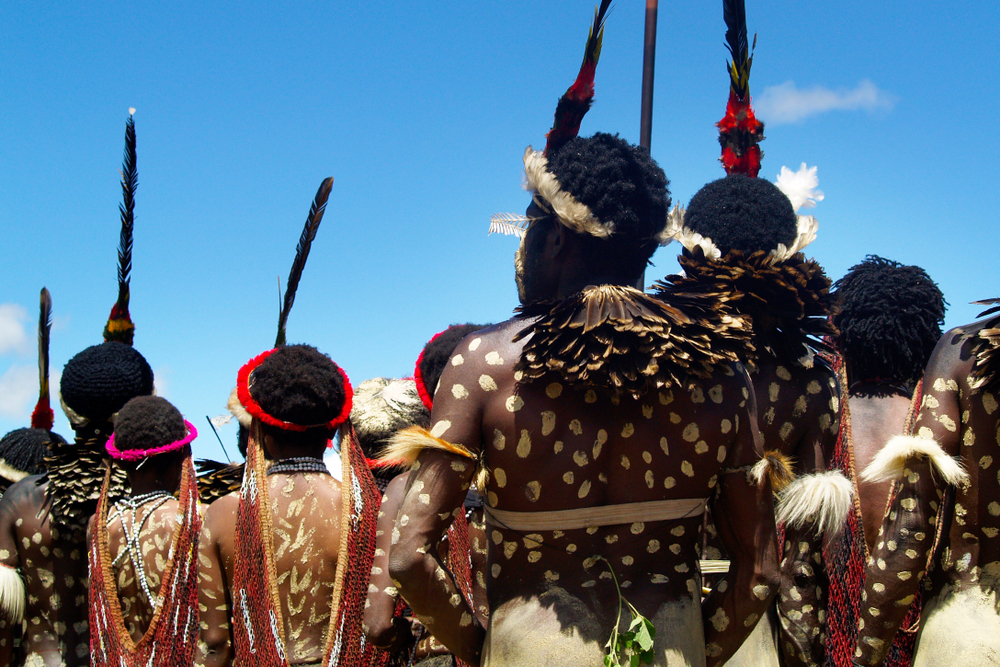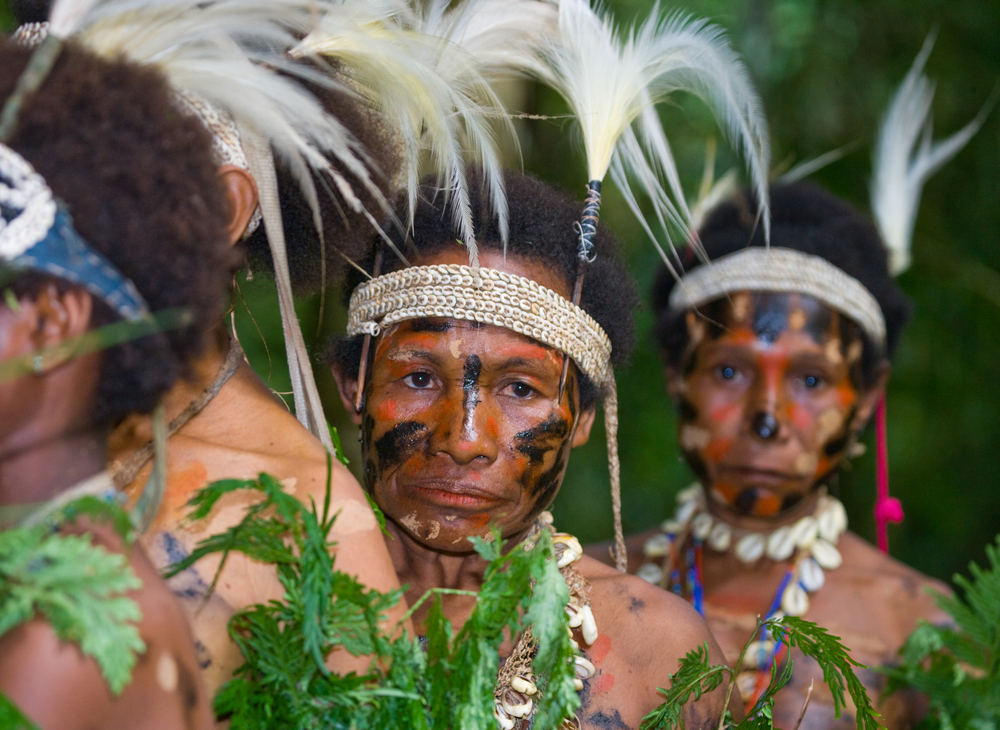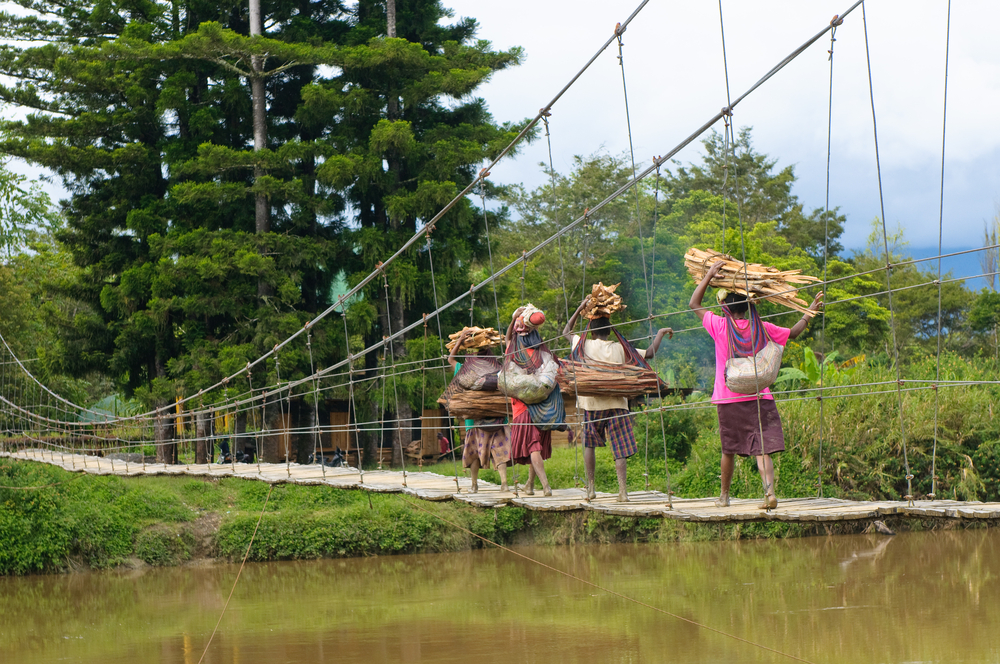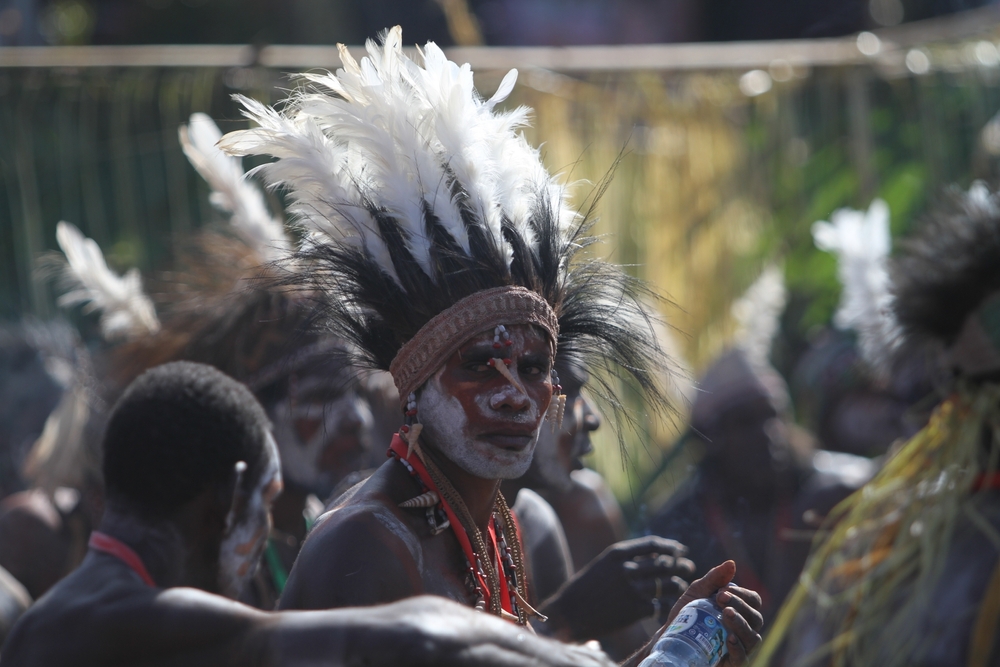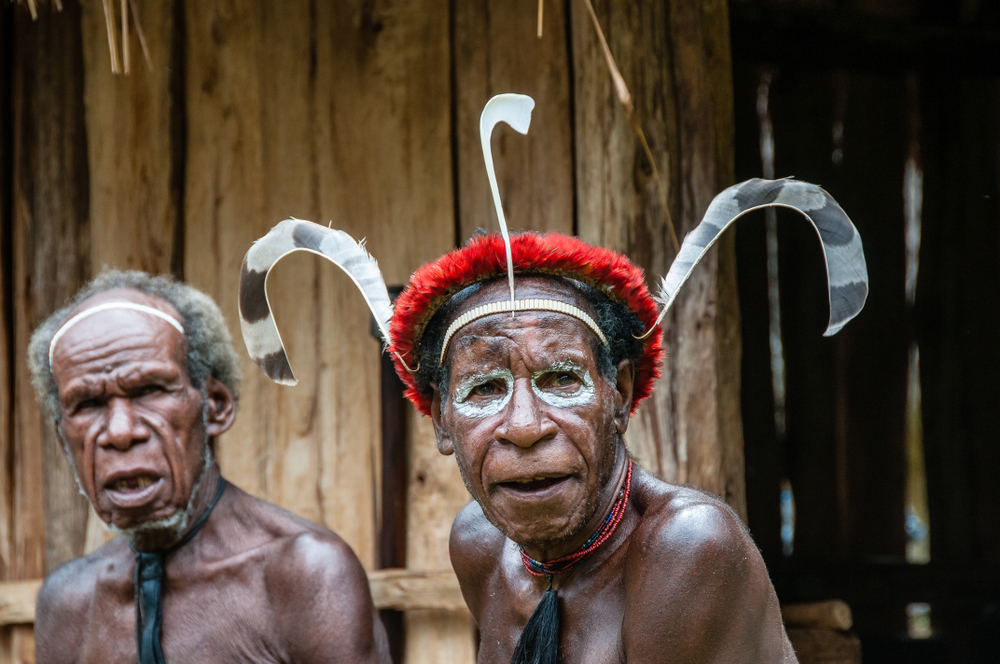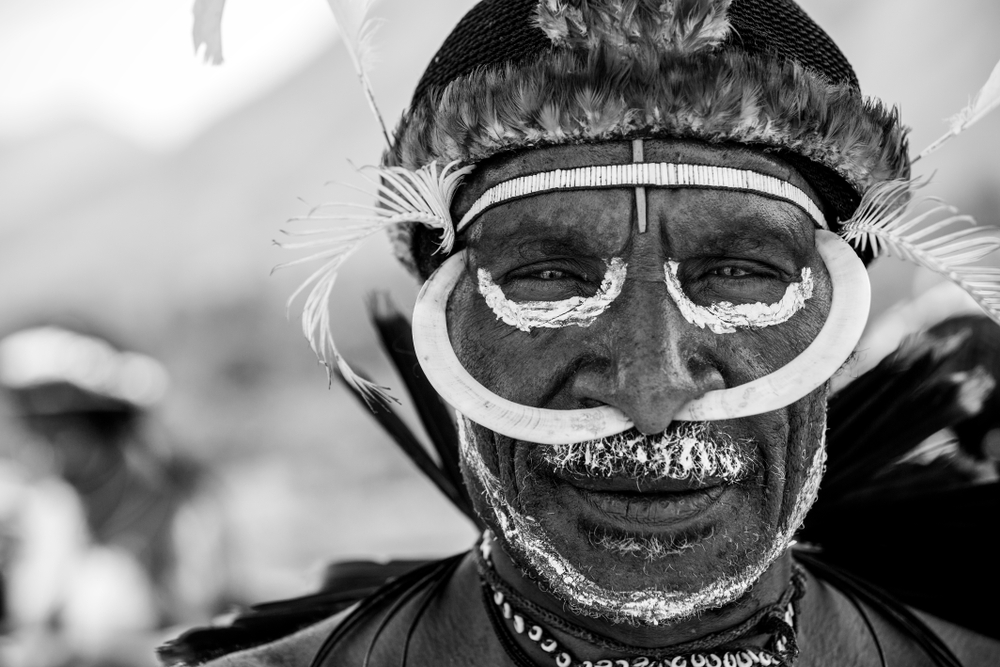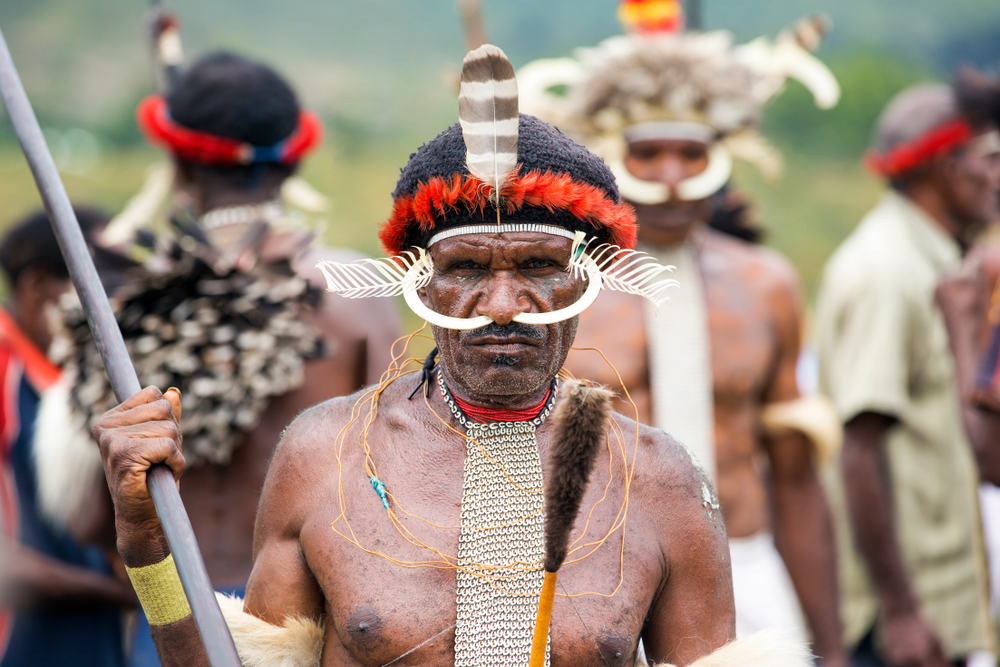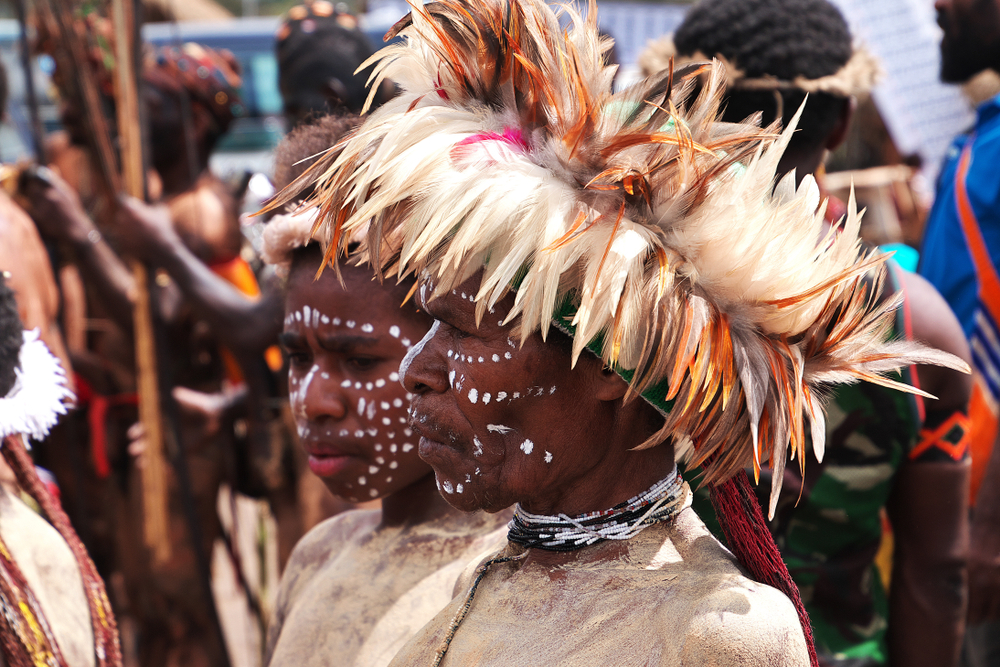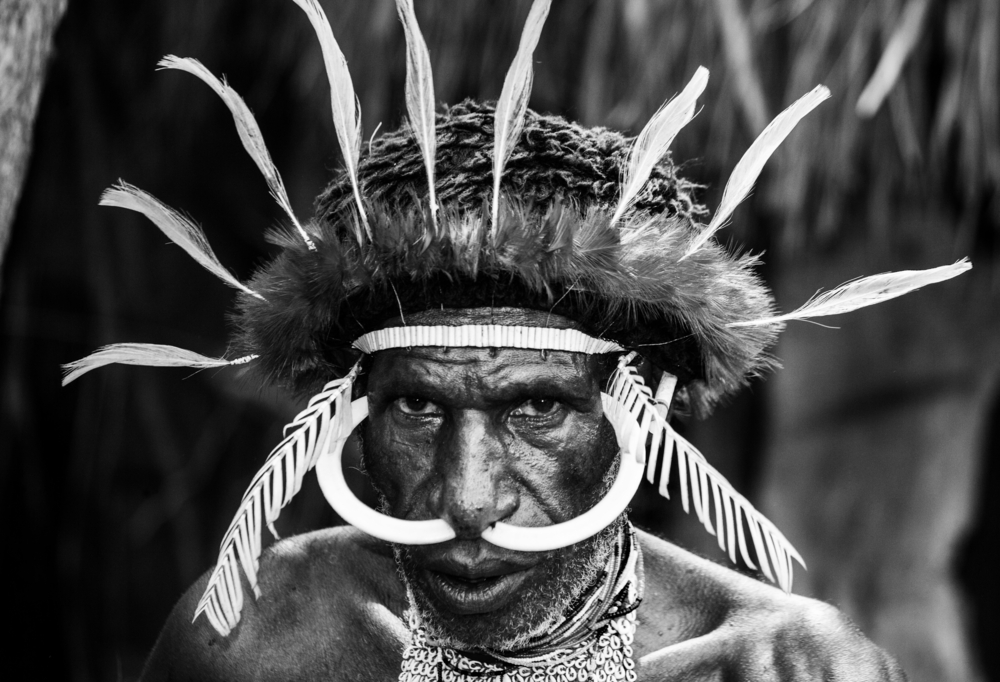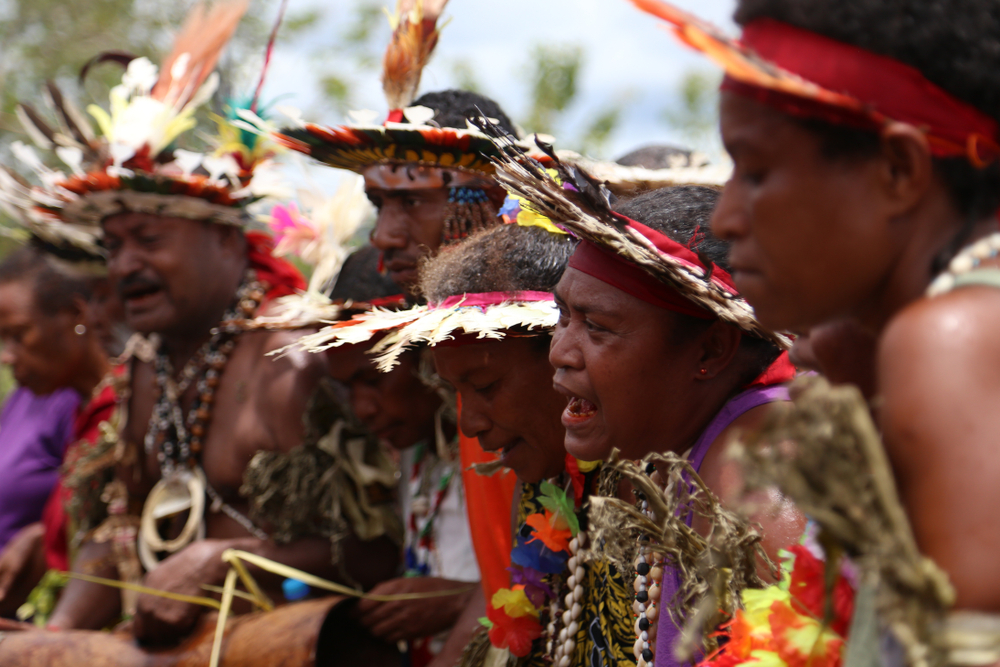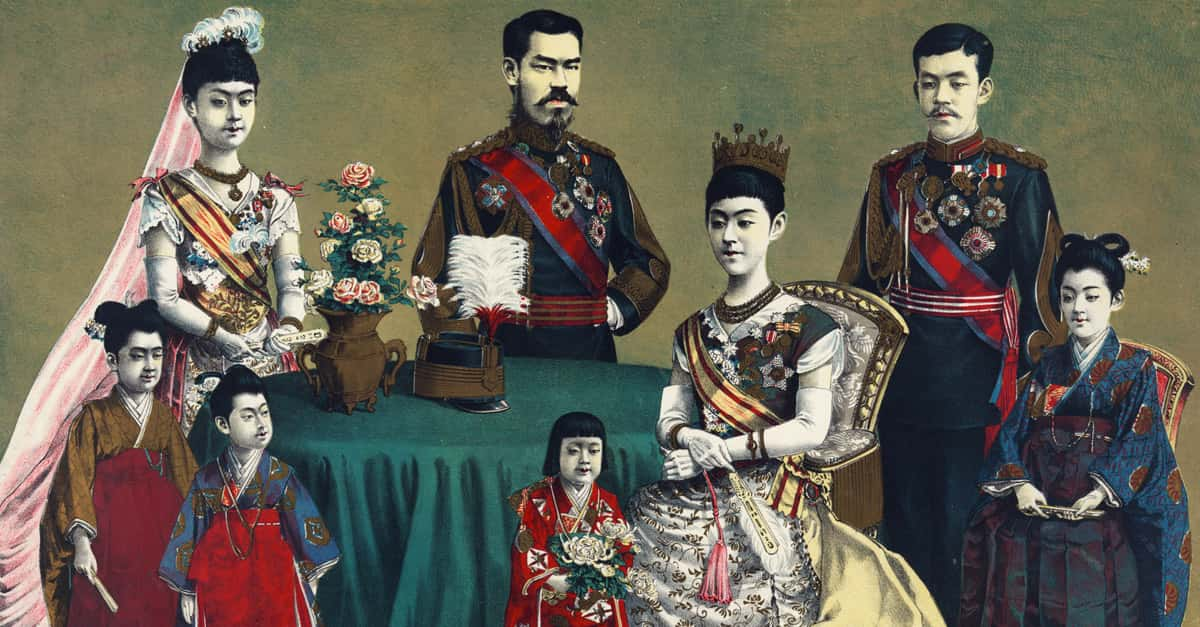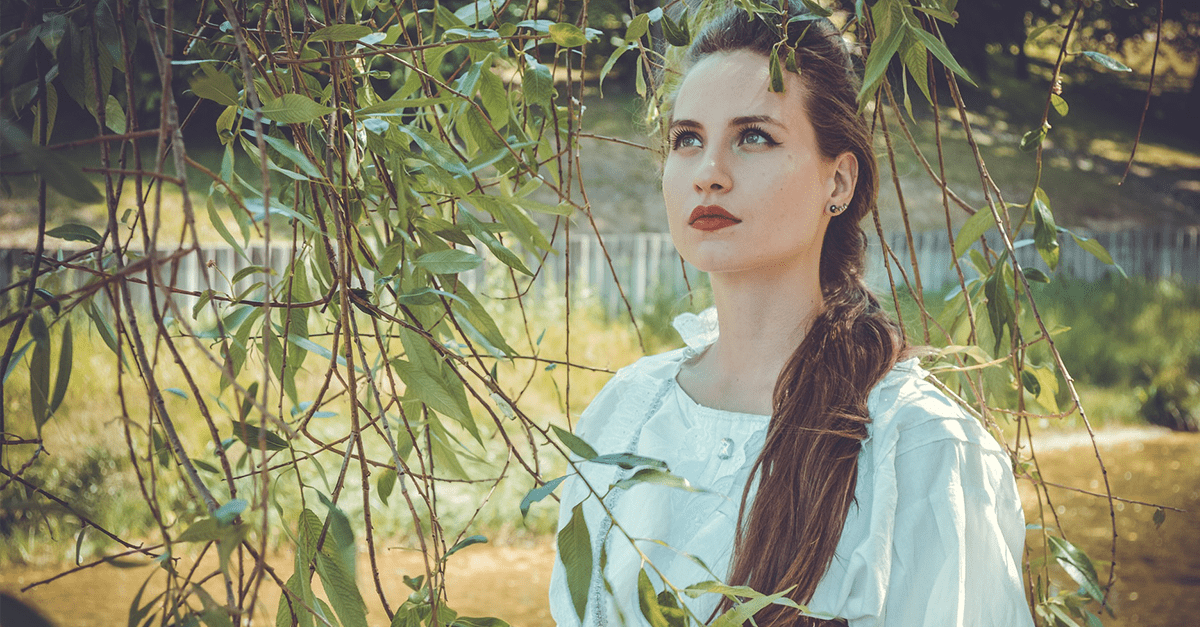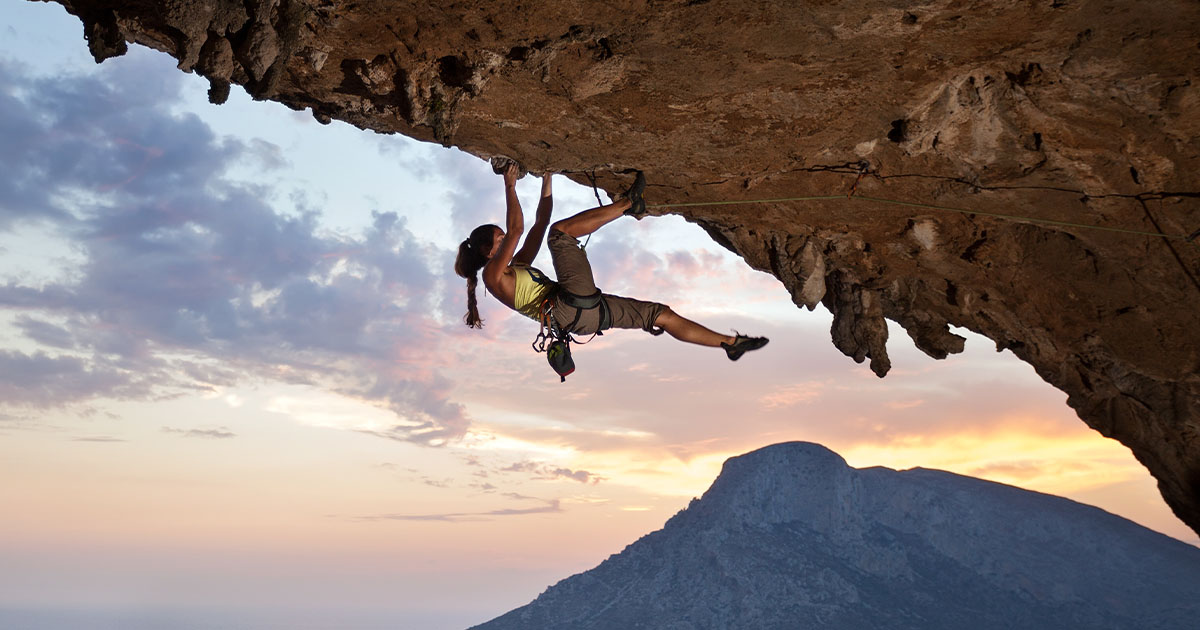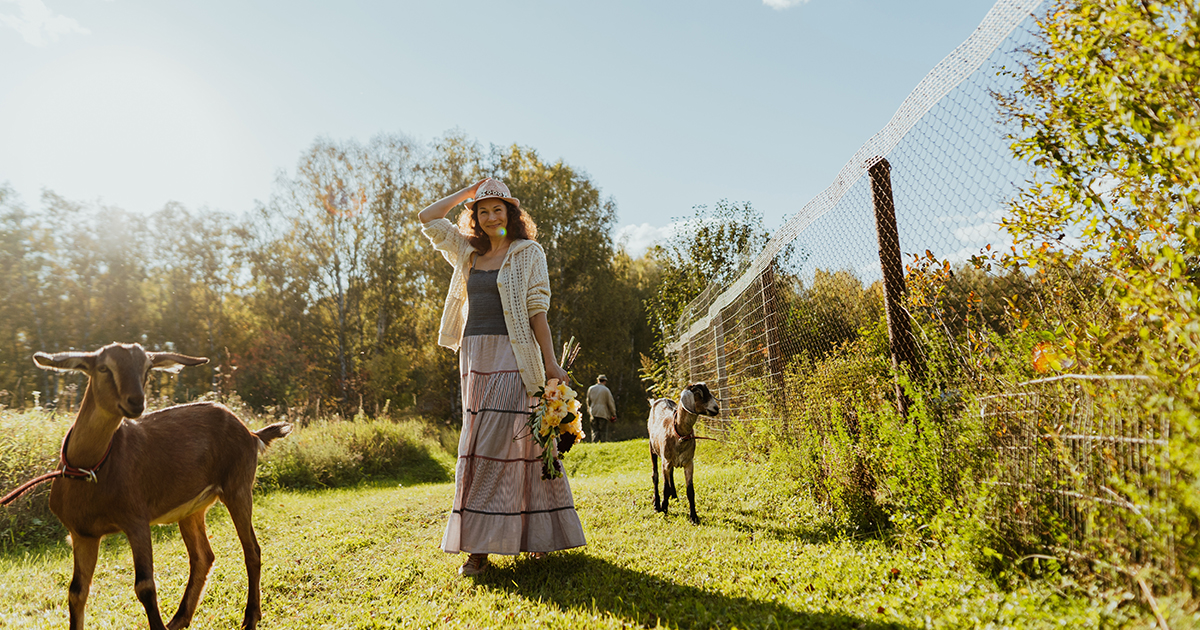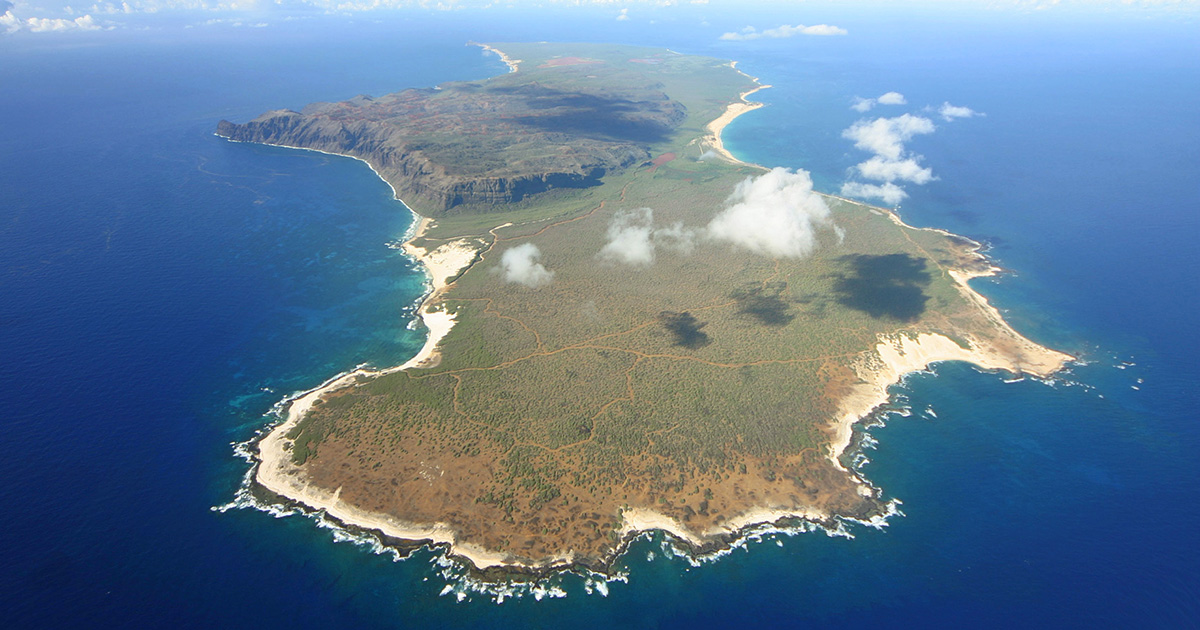The Most Dreaded Cannibals of Indonesia
The Yali People are a major highland tribal group in Papua, Indonesia. They call themselves 'Lords of Earth' are historically famous for witchcraft and cannibalism.
Feared by their enemies, this indigenous tribe continues to live an isolated, traditional lifestyle even today.
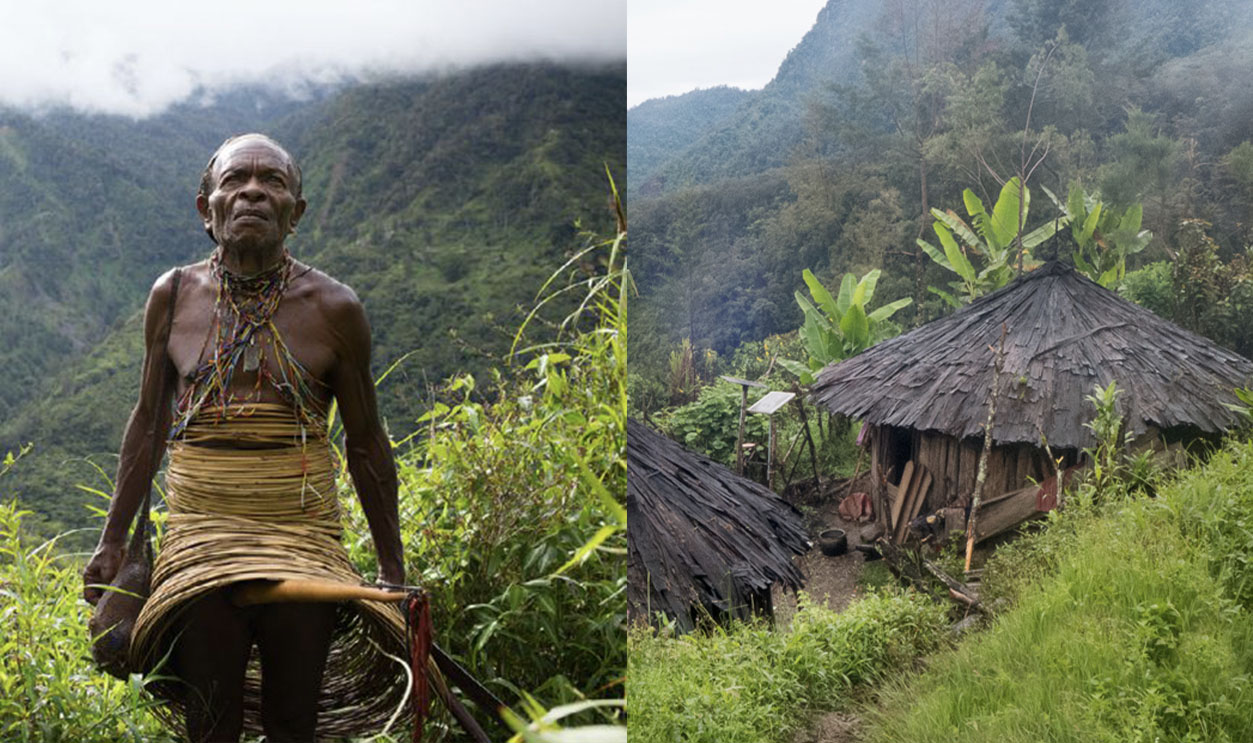
Where do they live?
The Yali people live to the east of the Baliem Valley in the Papuan highlands. Their major towns are Anggruk and Kosarek, and their territory is known collectively as Yalimo.
Who do they share their territory with?
They share the area with two other tribes called the Dani and the Lani, both of which show some resemblance to each other in looks, but all three have different cultural practices.
Are they isolated?
Yes, Papuan mountain Yalis dwell 2500-2000-meters above sea level. The only major way to access their territory is by air.
Both major towns are considered isolated due to extremely challenging geography, and are only accessible by walking for several hours.
How big is their tribe?
The Yali people were only discovered in the early 1960s, and since then they have branched off into smaller groups, so population has been challenging to source.
Accounts vary according to the source. The most recent population report was in 1991, estimating the Yali population to be 15,000-30,000.
What language do they speak?
The Yali speak a language that is in the Ngalik-Nduga subfamily—similar to other regional languages like the Dani, but with significant differences.
What do they look like?
Yali people are generally of smaller stature, reaching no taller than 150 cm (4-feet 9-inches)—classifying them as dwarfs.
They have a darker skin tone and black/brown hair.
What is their village like?
The Yali usually build their villages on the top of ridges, and make their crop fields on very steep slopes.
Water is all properly separated—drinking water, domestic use, and wastewater.
Do they all live together?
Women and men live in separate houses. Men must live in groups known as the "Honai," but women are allowed to live alone.
What are their houses like?
Their houses are round in shape, and made of chopped boards, with pandan leaf roofing. They are not very tall as the people themselves are not very tall.
What did the men wear?
Traditionally, the men only wore a sheath on their shaft, known as a koteka, and several rattan rings around their waist.
They covered their heads with hair nets, which had a pointed end at the neck.
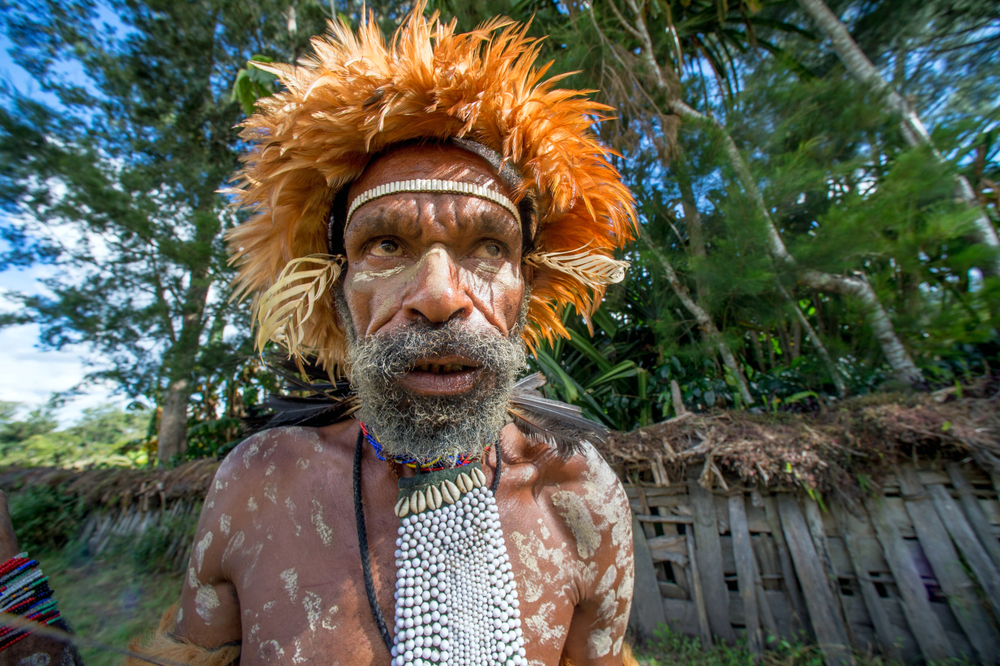 Sergey Uryadnikov, Shutterstock
Sergey Uryadnikov, Shutterstock
Significance of the Koteka
The koteka plays a role in tribal identification. The Dani tribe use a long, thin Koteka, the Lani sport a medium sized, wide cannon-like gourd, and the Yali wear the longest of all.
What did the women wear?
Traditionally, women only wore a skirt made of reed—their upper body remained uncovered.
They also wore a bilium—a net-like bag made of orchid fibers—that hung from their heads down their backs and covered their buttocks.
How does clothing for women progress?
The woman’s skirt is given to them in layers. The first layer is given to them when they are about four years old and then one layer is added every four years.
Upon her fourth layer, a woman is mature and can marry (about 16 years old).
How do they decorate their bodies?
The Yali people adorn their bodies with animal tusks, shells, and feathers in their hair. They paint their bodies with mud and naturally colored clay.
This is typically only done for ceremonies or festivities.
What do they wear today?
Modern day Yali people now wear t-shirts, pants, skirts, etc. which is usually acquired through trade.
However, they still adorn their bodies with tusks, shells, feathers and body paints.
What did they eat?
The Yali people were traditionally hunter-gatherers, and used shifting cultivation to grow crops.
Their staple foods were sweet potatoes and taro root. Fruits were not part of the common diet.
What do they use for hunting?
Yali people use bows and arrows with carved arrowheads as their main tool, but also make stone axes and use simple nets that they hang from their foreheads for gathering things and carrying supplies.
What were their gender roles?
Like most tribes similar to the Yali, the men were responsible for building, trading and hunting, while the women were primarily responsible for growing and gathering food.
What is a Yali prized possession?
Pigs have always been the main commodity of the Yali for trade, and are a symbol of wealth and prestige in the Yali culture. They are traded for valuable goods, to acquire land rights, and as a dowry in Yali marriages.
How is marriage practiced?
As with many similar indigenous tribes, the Yali people practice polygamy—meaning a man can have multiple wives.
Women typically get married when they reach age 16, men can get married at any age.
What do they do for fun?
The Yali people enjoy music, and use different instruments during their celebrations and rituals. These instruments are made from wood, bamboo plants, forest strings, shells, and deer and fox skin.
Song and Dance
The Yali people perform various dances and songs along with the music they make with their instruments. Though dance is usually done during ceremonies, children often spend a lot of time playing and dancing to music.
Do they have access to healthcare?
An air trip was first built in the early 1960s by missionaries and is still served today chartered plants to bring supplies and health services to the distance tribes in the area.
It takes about 25 minutes from Wamena in the Baliem valley to reach Angurruk (the main Yali village) by air—and about 4-5 days by foot.
Do they go to school?
The main Yali village, Angurruk, has a small community school for Yali kids. Not all children attend school, and there is no grade system. They are taught whatever their teacher knows.
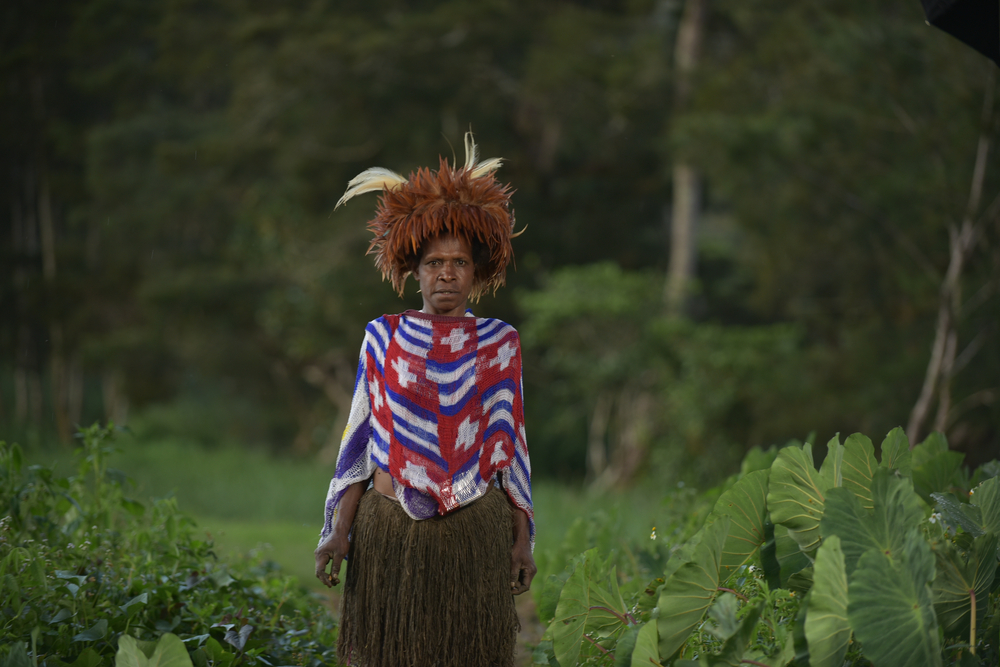
Do they have electricity or technology?
In recent years, the school acquired a large satellite dish in an attempt to connect to the rest of the world when solar power is available through rechargeable batteries—the only viable source of electricity in the area.
Fuel powered generators are not an option as they are too expensive to fly in.
What religion do they practice?
Today the Yali are of Christian religion, mainly Protestant. Traditionally though, the Yali people were most known to practice animism, and cannibalism.
Yali Cannibalism
Up until the 1970s, the Yali people were known to practice cannibalism, as consuming one’s foe was thought to show domination and inspire fear.
But, that’s not all they did.
Were the Yali people scary?
The Yali tribesmen were feared by their enemies because of their warcraft, specifically how they would end the lives of their enemies, cook them over a fire and eat the flesh, and then grind their bones to dust and toss it in the valley.
They did this to ensure their enemies would never return.
Did they eat everyone, or just their enemies?
In the earlier years, the Yali warriors would end the lives of anyone who was not part of their tribe. This included missionary outsiders. Anyone who lost their life was subjected to cannibalism.
Did the women and children partake in cannibalism?
Not usually. Some women were given the option, and children were always exempt. Pregnant women were also not permitted to partake in fear of evil spirits from the victim entering the unborn child.
How did the fear affect their own community?
It is said that the fear they bestowed on other tribes reached a degree that Yali people couldn’t visit each other in neighboring tribes.
As a result, the language developed differently and Yali tribe members themselves claim that the valley’s don’t understand each other.
Do they still practice cannibalism today?
Reports of cannibalism dwindled into the late 1970s as Christian missionaries had apparently stopped several feuds between villages.
Shortly after the conflict subsided, and the Yali people converted to Christianity, war rituals and ancestor cults dwindled as well—cannibalism being one of those rituals.
How do they live today?
Today, there are still many Yali people who live a traditional lifestyle in their small, isolated villages. They continue to be hunter-gatherers and wear minimal clothing and live in wooden huts.
Few villages accept tourists to visit, which is how they gain extra material and living supplies.
How much contact do they have with the outside world?
The Yali people have maintained regular trading links with the Dani people who live closest to the Baliem Valley, and supply them with salt—a highly prized commodity.
They also buy things from shops in Wamena—the district capital, and the only town, where the three main tribes meet for trading.
What do they get through trade?
The Yali people acquire clothing, food, tools, and materials they can use to make other supplies. They are careful in what they choose as they have to trek a long way with their supplies.
Their isolated villages require less modernized supplies—which is why they continue to live their traditional lifestyle.
The Yali People
The Yali people are one of the many indigenous tribes in Papua who still apply their culture. Although Christianity is present in the region, the Yali have maintained a traditional lifestyle, such as dress and polygamy.
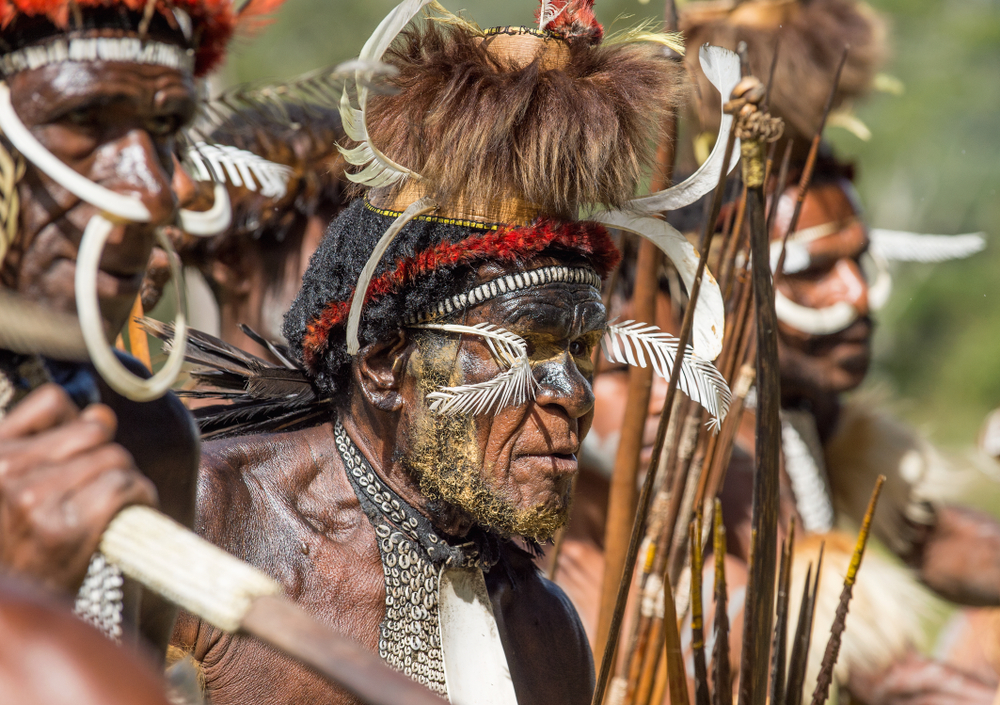 Sergey Uryadnikov, Shutterstock
Sergey Uryadnikov, Shutterstock

